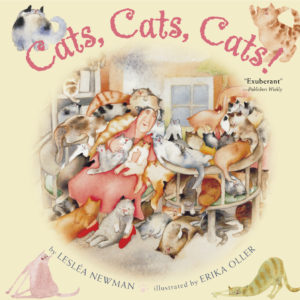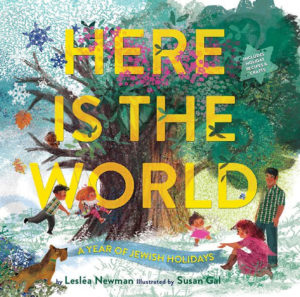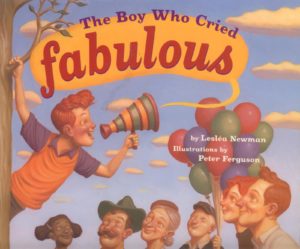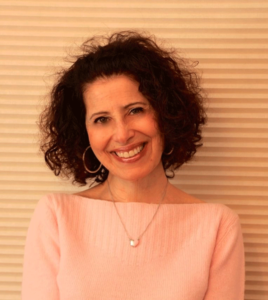 The February 2019 author interview at OPB is with … Lesléa Newman! Her name is well-known here in the halls of the OPB home office since we recently reviewed her new picture book, Gittel’s Journey: An Ellis Island Story. But she’s also written 70 other books for adults and children, and has won a host of awards, such as a National Endowment for the Arts poetry fellowship, the Association of Jewish Libraries Sydney Taylor Award, and the Massachusetts Book Award.
The February 2019 author interview at OPB is with … Lesléa Newman! Her name is well-known here in the halls of the OPB home office since we recently reviewed her new picture book, Gittel’s Journey: An Ellis Island Story. But she’s also written 70 other books for adults and children, and has won a host of awards, such as a National Endowment for the Arts poetry fellowship, the Association of Jewish Libraries Sydney Taylor Award, and the Massachusetts Book Award.
Lesléa lives in Holyoke, Massachusetts. She’s a past poet laureate of Northampton, Massachusetts, and she’s a faculty member at Spalding University’s low-residency MFA in Writing program.
And in case you don’t yet own any of her books, here are a few of my favs.
Website: www.lesleanewman.com
Facebook: www.facebook.com/leslea.newman
Twitter: @lesleanewman
RVC: At what point did you know that you were a writer? Where were the (warning) signs?
LN: I started writing poems when I was about 8 years old. I always knew I would be a writer; I never wanted to be anything else.
I was a voracious reader when I was growing up. As a teen, my friends and I all told our parents that after school we went to the library. My friends were all lying. I was the only one telling the truth! I loved going to the library. I still do.
RVC: Beyond being around books (something all writers love), what did you like most about the library?
LN: I loved that it was quiet, that I was left alone to wander through the stacks, and that it was a safe space where no one would tease or bully me (I was teased/bullied a lot as a teen). The library was and still is my safe harbor.
RVC: How does your work as a poet inform your writing of picture books?
LN: Picture books (even those written in prose) and poetry have so much in common. Both contain few words, so every word has to earn its space on the page. Both are written to be read aloud so one must be aware of the sounds of the words: the rhythm, the rhyme (if there is rhyme), the cadence. In other words, the musicality of the language. And both benefit from literary techniques such as alliteration, repetition, etc.
RVC: Let’s talk about Gittel’s Journey, which was reviewed here at OPB not so long ago. This is a book that came about from family oral histories. What kind of challenges did you have with using that as source material?
LN: I felt an enormous pressure to “get the words right” especially as the real Gittel’s daughter is still alive (she is 90) and I very much wanted her to feel good about the book. The book is an homage to an actual person who showed an incredible amount of courage. I hope it conveys that. I hope the children reading the book will get a sense of how brave Gittel had to be to cross an ocean alone and start a new life all by herself, without knowing if she would ever hear from or see her mother again.
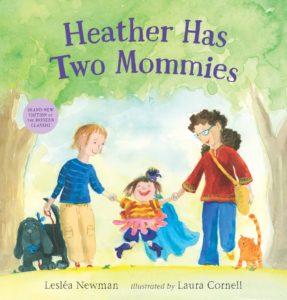 RVC: Since we’re getting specific about your book, let me ask this–you’ve been asked oodles of questions before about Heather has Two Mommies. In retrospect, what’s the best (perhaps unappreciated) craft aspect about that groundbreaking title?
RVC: Since we’re getting specific about your book, let me ask this–you’ve been asked oodles of questions before about Heather has Two Mommies. In retrospect, what’s the best (perhaps unappreciated) craft aspect about that groundbreaking title?
LN: It’s hard to write a book with a message without coming across as didactic. I did my best!
RVC: Many of your books have a clear commitment to accurately present Jewish characters, beliefs, and history. What’s the current state of the affairs in kidlit for those topics?
LN: Jewish children’s literature is alive and well! I’m happy to see that in addition to holiday books, there are books on a variety of other topics. I’m especially happy to see books that focus on diverse cultures. Some examples that I particularly admire are: Chicken Soup, Chicken Soup by Pamela Mayer which focuses on a girl with a Jewish grandmother and a Chinese grandmother; A Horn for Louis by Eric Kimmel which tells the story of how a Jewish family helped Louis Armstrong acquire a horn; and As Good as Anybody by Rich Michelson which is about two social justice icons, Martin Luther King, Jr. and Abraham Josua Heschel.
RVC: How do you feel about #ownvoices when it comes to books on Jewish issues and themes?
LN: I support #ownvoices — it is very important to hear stories being told by people who are speaking from direct experience. I have never thought about the concept in terms of Jewish issues and themes. As someone who has been challenged and censored, I would never tell other writers what they can and cannot write. What’s important is that a writer has good intentions, does thorough research, hires sensitivity readers, works really hard, and is passionately committed to the story.
For more about #ownvoices I highly recommend reading Jacqueline Woodson’s essay.
RVC: How important is the element of play in your use of language? And how much is too much?
LN: It depends on what I’m writing. I have recently gone back to writing humorous picture books. One in particular, which I just finished, contains a great deal of word play. Alas, since it has not yet found a home, I’m not quite ready to talk about it. Suffice to say that as a poet and picture book writer, my favorite thing to do is play with language. I can tinker with words all day. I don’t know that there can be too much of this. It all depends on the content of the story.
RVC: What are you currently reading? And please do offer a three-word review for each of those titles!
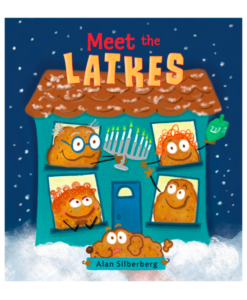 LN: Meet the Latkes by Alan Silberberg (picture book) Charming, hysterically funny!
LN: Meet the Latkes by Alan Silberberg (picture book) Charming, hysterically funny!
The Friend by Sigrid Nunez (novel) Poignant, heartbreakingly beautiful.
A Cruelty Special To Our Species by Emily Jungmin Yoon (poetry) Devastating, important, life-changing.
RVC: I know the latter two of those, and you’re right–dynamite. Great choices.
But it’s time to move to the Lightning Round. Zappy-fast answers, please! Ready? If the animal kingdom ever rises up and takes over, which type of animal might make the best president?
LN: A cat of course. My cat would do a great job.
RVC: Describe your writing career using only film titles. Three max!
LN: My Brilliant Career, Almost Famous, Poetic Justice.
RVC: Most writerly flavor of ice cream?
LN: Vanilla, because it looks like a blank piece of paper!
RVC: Three things that are at the core of every picture book you write?
LN: Respect, acceptance, fabulousness.
RVC: Last picture book that you read and immediately thought, “WOW, I wish I wrote that!”
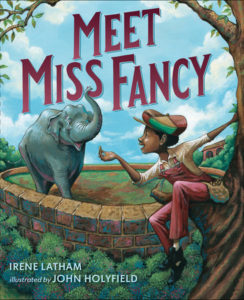 LN: Meet Miss Fancy by Irene Latham, illustrated by John Holyfield.
LN: Meet Miss Fancy by Irene Latham, illustrated by John Holyfield.
RVC: Best compliment you’ve ever gotten from a child reader?
LN: I love your shoes.
RVC: Thanks for being a great OPB guest, Lesléa. I appreciate it!


